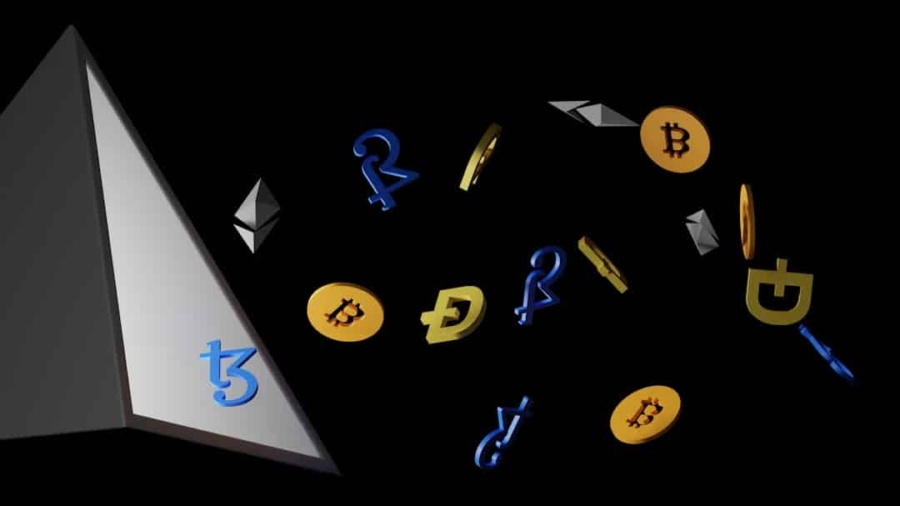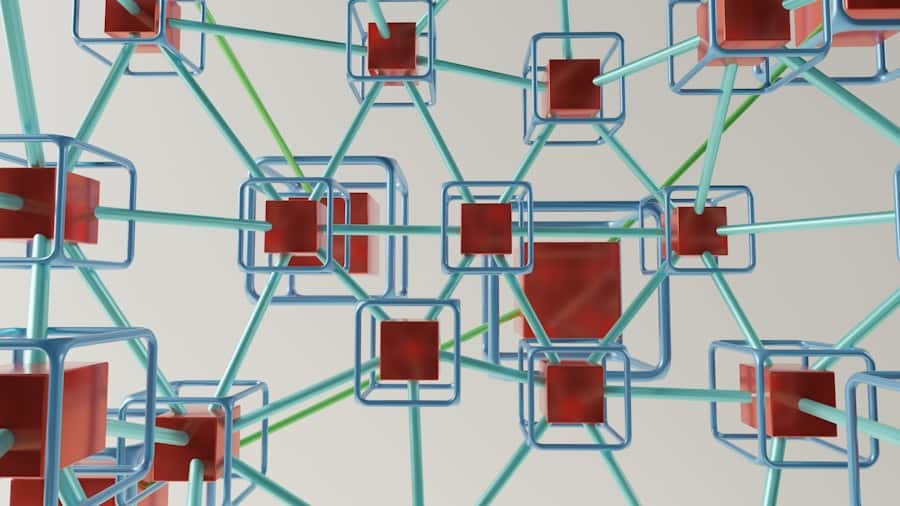In an era where consumers are increasingly concerned about the origins of their food, transparent food traceability systems have emerged as a critical component of the modern food supply chain. These systems allow stakeholders—from producers to consumers—to track the journey of food products from farm to table. The demand for transparency is driven by various factors, including food safety concerns, ethical sourcing, and sustainability.
As foodborne illnesses and contamination scandals continue to make headlines, the need for reliable traceability mechanisms has never been more pressing. Transparent food traceability systems not only enhance consumer trust but also empower businesses to respond swiftly to potential issues, thereby minimizing risks and ensuring compliance with regulatory standards. The traditional methods of tracking food products often rely on paper-based documentation and manual processes, which can be prone to errors and inefficiencies.
In contrast, modern traceability systems leverage advanced technologies to provide real-time data and insights into the supply chain. This shift towards digital solutions is essential for meeting the growing expectations of consumers who seek assurance about the quality and safety of their food. As we delve deeper into the role of blockchain technology in enhancing food traceability, it becomes evident that this innovative approach offers a robust framework for achieving transparency and accountability in the food industry.
Key Takeaways
- Transparent food traceability systems are crucial for ensuring the safety and authenticity of food products.
- Blockchain technology provides a decentralized and secure way to record and track the journey of food products from farm to table.
- The use of blockchain in food traceability offers benefits such as improved food safety, reduced fraud, and increased consumer trust.
- Blockchain ensures transparency in food supply chains by providing immutable and real-time data that can be accessed by all parties involved.
- Case studies have shown successful implementation of blockchain in food traceability, leading to improved efficiency and trust in the food industry.
Understanding Blockchain Technology
Decentralized and Trustworthy
The decentralized nature of blockchain means that no single entity has control over the entire system, which enhances trust among participants who may not have established relationships.
Food Traceability and Supply Chain Management
In the context of food traceability, blockchain can be utilized to create an immutable record of every transaction that occurs within the supply chain. This includes details such as the origin of ingredients, processing methods, transportation conditions, and storage practices. By capturing this information in real-time, blockchain enables stakeholders to access a comprehensive history of a product’s journey.
Streamlining Operations with Smart Contracts
Furthermore, smart contracts—self-executing contracts with the terms of the agreement directly written into code—can automate various processes within the supply chain, reducing the need for intermediaries and streamlining operations.
The Benefits of Using Blockchain in Food Traceability
The integration of blockchain technology into food traceability systems offers numerous benefits that can significantly enhance the efficiency and reliability of supply chains. One of the most notable advantages is improved transparency. With blockchain, all participants in the supply chain can access a shared ledger that provides real-time visibility into product movements and conditions.
This transparency fosters trust among stakeholders, as everyone can verify claims about product quality and safety without relying on third-party certifications. Another key benefit is enhanced traceability. In the event of a food safety incident, such as a contamination outbreak, blockchain allows for rapid identification of affected products and their sources.
This capability can drastically reduce response times and limit the scope of recalls, ultimately protecting consumers and minimizing financial losses for businesses. For instance, when a batch of lettuce was linked to an E. coli outbreak in 2018, companies using blockchain were able to trace the contaminated product back to its source within minutes, while others relying on traditional methods took days or even weeks to identify the problem.
How Blockchain Ensures Transparency in Food Supply Chains
Blockchain ensures transparency in food supply chains by providing a secure and immutable record of all transactions related to a product’s journey. Each participant in the supply chain—whether farmers, processors, distributors, or retailers—can input data into the blockchain, creating a comprehensive history that is accessible to all authorized parties. This shared visibility eliminates information silos and allows stakeholders to verify claims about product origins and handling practices.
Moreover, blockchain technology enables consumers to access detailed information about their food products through simple scanning mechanisms, such as QR codes or NFC tags. By scanning these codes with their smartphones, consumers can view a product’s entire history, including where it was grown, how it was processed, and any certifications it may hold. This level of transparency not only empowers consumers to make informed choices but also encourages producers to adhere to higher standards of quality and sustainability.
Case Studies of Successful Implementation of Blockchain in Food Traceability
Several companies have successfully implemented blockchain technology to enhance their food traceability systems, demonstrating its practical applications and benefits. One notable example is Walmart’s collaboration with IBM on the Food Trust initiative. By utilizing blockchain, Walmart has been able to track the provenance of fresh produce within seconds rather than days.
In a pilot project involving mangoes from Mexico, Walmart was able to trace the fruit’s journey from farm to store in just 2.2 seconds—a stark contrast to the six days it took using traditional methods. This rapid traceability not only improves food safety but also enhances inventory management and reduces waste. Another compelling case study is that of Nestlé, which has embraced blockchain technology to ensure transparency in its supply chain for products like coffee and dairy.
Nestlé’s blockchain initiative allows consumers to trace their coffee back to its source, providing insights into sustainable farming practices and ethical sourcing. By sharing this information with consumers, Nestlé not only builds brand loyalty but also demonstrates its commitment to sustainability and responsible sourcing.
Challenges and Limitations of Using Blockchain in Food Traceability
Despite its numerous advantages, implementing blockchain technology in food traceability systems is not without challenges.
For blockchain to be effective in tracking food products across diverse supply chains, all participants must agree on common protocols and data formats.
This can be particularly challenging in an industry characterized by fragmentation and varying levels of technological adoption among stakeholders. Additionally, there are concerns regarding data privacy and security. While blockchain is inherently secure due to its decentralized nature, sensitive information about suppliers or proprietary processes may need protection from unauthorized access.
Striking a balance between transparency and confidentiality is crucial for gaining buy-in from all parties involved in the supply chain. Furthermore, the initial costs associated with implementing blockchain solutions can be prohibitive for smaller producers or businesses that may lack the resources to invest in new technologies.
Future Potential of Blockchain in Food Traceability Systems
The future potential of blockchain technology in food traceability systems is vast and promising. As consumer demand for transparency continues to grow, more companies are likely to adopt blockchain solutions to enhance their supply chain operations. The integration of Internet of Things (IoT) devices with blockchain could further revolutionize food traceability by providing real-time data on environmental conditions during transportation and storage.
For instance, sensors could monitor temperature and humidity levels throughout the supply chain, automatically updating the blockchain with this information. Moreover, advancements in artificial intelligence (AI) could complement blockchain technology by analyzing data trends and predicting potential issues before they arise. This proactive approach could lead to more efficient supply chains and improved food safety outcomes.
As regulatory bodies increasingly emphasize traceability requirements, businesses that adopt blockchain solutions will be better positioned to comply with these standards while also meeting consumer expectations for transparency.
The Impact of Blockchain on Transparent Food Traceability Systems
The impact of blockchain technology on transparent food traceability systems is profound and transformative. By providing an immutable record of transactions and enhancing visibility across the supply chain, blockchain fosters trust among stakeholders while empowering consumers with information about their food products. As demonstrated by successful case studies from industry leaders like Walmart and Nestlé, blockchain has already begun reshaping how food is tracked and verified.
While challenges remain in terms of standardization and data privacy, the potential benefits far outweigh these obstacles. As more companies recognize the importance of transparency in building consumer trust and ensuring food safety, we can expect widespread adoption of blockchain solutions across the food industry. The future holds exciting possibilities for enhanced traceability systems that not only protect consumers but also promote sustainable practices within the global food supply chain.
In a related article, The Best Tablets for Students in 2023, discusses the top tablets that are ideal for students to enhance their learning experience. Just like how blockchain ensures transparency in food traceability, these tablets offer innovative features to support students in their academic journey. Both technologies showcase the importance of utilizing advanced tools to improve efficiency and effectiveness in different fields.
FAQs
What is blockchain technology?
Blockchain technology is a decentralized, distributed ledger system that records transactions across many computers in such a way that the registered transactions cannot be altered retroactively.
How does blockchain technology contribute to transparent food traceability systems?
Blockchain technology provides a secure and transparent way to track the journey of food products from farm to table. It allows for the recording of every step in the supply chain, including production, processing, and distribution, creating a tamper-proof record of the product’s history.
What are the benefits of using blockchain in food traceability systems?
Using blockchain in food traceability systems can help to improve food safety, reduce food fraud, and enhance consumer trust. It allows for quick and accurate identification of the source of contamination or other issues, leading to faster and more targeted recalls.
How does blockchain technology ensure transparency in food traceability?
Blockchain technology ensures transparency in food traceability by providing a permanent and unchangeable record of every transaction and movement of a food product. This allows consumers and other stakeholders to verify the authenticity and origin of the food they are consuming.
What are some examples of companies using blockchain for food traceability?
Several companies are using blockchain for food traceability, including Walmart, Nestle, and Carrefour. These companies are using blockchain to track products such as fruits, vegetables, and meat, providing consumers with detailed information about the origin and journey of the food they purchase.



